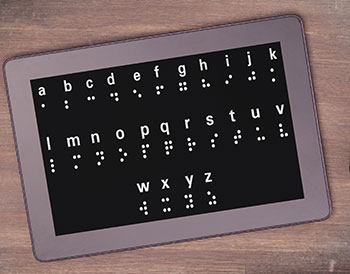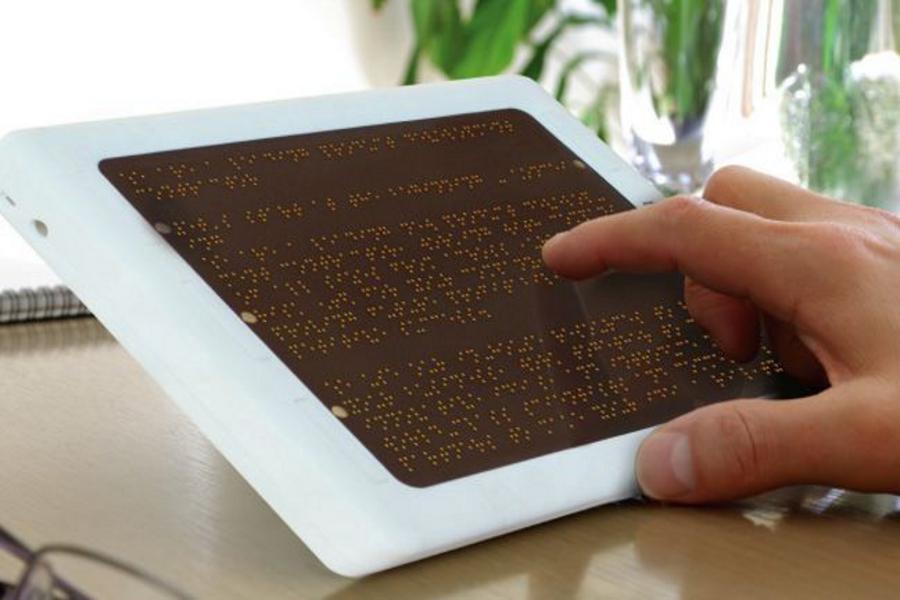Empowering Freedom With Assistive Innovation for the Blind
The integration of assistive technology right into the lives of people with aesthetic disabilities represents a significant development in promoting freedom and self-sufficiency. From innovative display viewers to innovative wise walking sticks, these devices not only boost everyday navigation and interaction however also empower customers to involve meaningfully in different elements of life. As we discover the myriad advantages and real-world applications of these technologies, it comes to be important to analyze the hidden factors that contribute to their performance and the potential for future developments in this crucial field.
Overview of Assistive Technology

The development of assistive technology is based in principles of inclusivity and empowerment. Innovations in software application, hardware, and sensory enhancements supply users with choices customized to their certain requirements. From screen readers that convert message to speech, to responsive gadgets that share details with touch, these tools transform the means people engage with their environments.
In enhancement to practical applications, assistive technology cultivates better social inclusion and involvement in numerous industries, including education and learning and work (Screen readers for the blind). As r & d proceed to advance, the capacity for assistive modern technology to additionally enhance the lives of aesthetically damaged individuals remains encouraging, leading the means for a more equitable society where everybody can prosper
Kinds Of Assistive Instruments
A selection of assistive tools have emerged to sustain individuals with aesthetic problems, each developed to fulfill particular requirements and enhance everyday performance. These gadgets vary from low-tech options to modern innovations, offering diverse choices for users.
Low-tech tools consist of magnifiers and large-print materials that help in reading and writing. Braille tools, such as Braille slates and styluses, enable responsive analysis and communication. Positioning and movement aids, like white walking sticks, assist individuals browse their environment securely.
On the higher end of the spectrum, digital zoom systems and display readers offer considerable support. Digital magnifiers permit customers to enlarge text and photos on displays, while screen viewers transform electronic web content right into synthesized speech, helping with access to information on mobile phones and computers.
Smart device applications also play a crucial function, providing functions like message recognition and navigating assistance. Wearable innovation, such as wise glasses outfitted with enhanced truth, is emerging as an appealing tool to improve situational recognition.
Advantages of Assistive Technology
The integration of assistive technology substantially improves the lifestyle for people with visual disabilities. These innovations encourage customers by promoting freedom, enabling them to navigate their environments a lot more successfully and execute daily tasks with greater simplicity. Display readers and magnification software application enable people to accessibility electronic information, promoting educational and expert opportunities that might have previously been out of reach.
Furthermore, assistive devices such as wise walking canes and GPS applications give real-time navigation help, enhancing flexibility and security. This raised autonomy not only boosts self-worth but also motivates social engagement, allowing customers to participate more totally in their areas.
Assistive technology likewise facilitates communication, helping users connect with others through voice acknowledgment and text-to-speech applications. This ability is important for keeping relationships and accessing crucial info.
Furthermore, the personalization choices offered with several assistive modern technologies ensure that users can tailor devices to their certain needs, better enhancing functionality and efficiency. On the whole, the benefits of assistive innovation for people with aesthetic impairments are extensive, advertising an extra inclusive culture where everybody can pursue their goals and desires.
Situation Studies and Success Stories
Highlighting the transformative effect of assistive innovation, various case researches highlight just how individuals with visual problems have efficiently integrated these devices into their day-to-days live. One compelling instance includes an university student who made use of display reading software application to navigate on the internet sources and academic products effectively. This technology not only promoted her education but additionally improved her self-confidence in joining discussions and group tasks.
An additional case research features a specialist that utilizes a mobile phone application developed for navigation and things recognition. By utilizing this application, he has actually gained back freedom in both his personal and workplace, permitting him to commute independently and involve with colleagues better.
In addition, a retired person shared her experience with braille e-readers, which allowed her to access a substantial array anti glare blue light glasses of literature and remain gotten in touch with her area through book clubs.
These success stories emphasize the crucial role of assistive innovation in fostering freedom, boosting high quality of life, and promoting social combination for people with aesthetic disabilities (Smart glasses for the visually impaired). By accepting these cutting-edge tools, customers can conquer difficulties and seize opportunities that add to their personal and professional gratification

Future Trends in Assistive Innovation
Technology in assistive technology is poised to redefine the landscape of assistance for individuals with aesthetic impairments. Emerging trends emphasize the assimilation of expert system (AI) and maker discovering, which boost the capability of tools that aid with navigating and info availability. AI-driven applications are currently qualified of analyzing aesthetic data in real-time, enabling customers to engage with their environment more individually.
Moreover, the growth of wearable technology is advancing quickly. Smart glasses furnished with augmented fact (AR) can supply audio progressive reading glasses descriptions of environments, changing how customers connect with public areas. These gadgets not just advertise autonomy but additionally foster social inclusion.
Furthermore, the Net of Things (IoT) is making homes smarter, enabling seamless connection in between daily appliances and assistive devices. This connection encourages individuals by making it possible for voice-activated controls and automated feedbacks customized to individual demands.
Conclusion
Finally, assistive modern technology plays a critical function in encouraging people with visual problems by enhancing their self-reliance and engagement with their environments. The varied variety of applications and tools available not only helps with navigating and communication yet also promotes social assimilation and possibilities for individual and professional development. As advancements proceed in this field, the possibility for boosting the lifestyle for those with aesthetic disabilities will certainly increase, fostering greater autonomy and empowerment.
